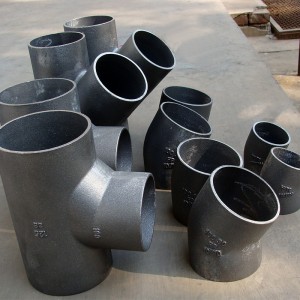- Afrikaans
- Albanian
- Amharic
- Arabic
- Armenian
- Azerbaijani
- Basque
- Belarusian
- Bengali
- Bosnian
- Bulgarian
- Catalan
- Cebuano
- China
- China (Taiwan)
- Corsican
- Croatian
- Czech
- Danish
- Dutch
- English
- Esperanto
- Estonian
- Finnish
- French
- Frisian
- Galician
- Georgian
- German
- Greek
- Gujarati
- Haitian Creole
- hausa
- hawaiian
- Hebrew
- Hindi
- Miao
- Hungarian
- Icelandic
- igbo
- Indonesian
- irish
- Italian
- Japanese
- Javanese
- Kannada
- kazakh
- Khmer
- Rwandese
- Korean
- Kurdish
- Kyrgyz
- Lao
- Latin
- Latvian
- Lithuanian
- Luxembourgish
- Macedonian
- Malgashi
- Malay
- Malayalam
- Maltese
- Maori
- Marathi
- Mongolian
- Myanmar
- Nepali
- Norwegian
- Norwegian
- Occitan
- Pashto
- Persian
- Polish
- Portuguese
- Punjabi
- Romanian
- Russian
- Samoan
- Scottish Gaelic
- Serbian
- Sesotho
- Shona
- Sindhi
- Sinhala
- Slovak
- Slovenian
- Somali
- Spanish
- Sundanese
- Swahili
- Swedish
- Tagalog
- Tajik
- Tamil
- Tatar
- Telugu
- Thai
- Turkish
- Turkmen
- Ukrainian
- Urdu
- Uighur
- Uzbek
- Vietnamese
- Welsh
- Bantu
- Yiddish
- Yoruba
- Zulu
Sep . 09, 2024 02:03 Back to list
double pass heat exchanger
Double Pass Heat Exchanger An Overview
A double pass heat exchanger is an innovative thermal engineering solution designed to enhance heat transfer efficiency in various industrial applications. The primary function of any heat exchanger is to transfer heat between two or more fluids without them mixing. The double pass configuration, however, introduces a more complex design that significantly improves the performance of the heat exchanger.
In a standard heat exchanger, fluids flow through a single pass, allowing for heat transfer as they interact within the exchanger. However, in a double pass heat exchanger, the fluid makes two passes through the heat exchange area. This configuration can be achieved through various designs, such as U-tube or shell and tube, where one fluid flows through a series of tube passes while the other fluid typically flows through the shell side.
One of the key advantages of a double pass heat exchanger is its enhanced thermal performance. By allowing the fluid to pass through the heat exchanger twice, it has a greater opportunity to absorb or dissipate heat, depending on its role as the heating or cooling medium. This results in increased overall heat transfer coefficients, allowing for more efficient energy use, which is particularly beneficial in processes requiring precise temperature control or significant thermal energy recovery.
double pass heat exchanger

Another advantage is the reduced temperature difference between the two fluids, which can lead to lower thermal stresses on the materials used in construction, thus enhancing the longevity of the equipment. This feature can be particularly important in applications dealing with high temperatures or corrosive substances, as it minimizes the risk of damage due to thermal expansion or material fatigue.
Moreover, the compact design of double pass heat exchangers allows for a smaller footprint compared to other heat exchange systems with similar thermal performance. This can be crucial in industries where space is a premium, as it enables better integration into existing systems, reducing installation costs and improving overall efficiency.
Double pass heat exchangers find applications across various industries, including power generation, chemical processing, food and beverage production, and HVAC systems. Their versatile design can be tailored to meet specific heat exchange requirements, making them suitable for a wide range of applications from large-scale industrial processes to smaller, more specialized tasks.
In conclusion, double pass heat exchangers represent a significant advancement in thermal management technology. By allowing fluids to flow through the heat exchanger twice, these systems provide improved efficiency, enhanced thermal performance, and reduced operational risks. As industries increasingly prioritize energy efficiency and sustainability, the role of double pass heat exchangers is likely to grow, making them an essential component in modern engineering solutions.
-
Premium Custom & ODM Vehicle Parts Bulk Order Deals
NewsMay.17,2025
-
Custom Commercial Hot Water Heat Exchangers High-Efficiency Solutions
NewsMay.17,2025
-
Custom Fibre Reinforced Concrete Pipe Bottom Ring Moulds – Buy Durable Solutions
NewsMay.17,2025
-
Steel Reinforced Concrete Pipe Bottom Ring Molds High-Quality & Custom
NewsMay.16,2025
-
Low NOx Condensing Gas Boilers for Domestic Hot Water ODM & Custom
NewsMay.16,2025
-
Buy Cast Silicon Aluminum Hot Water Heat Exchangers Efficient & Durable
NewsMay.15,2025


